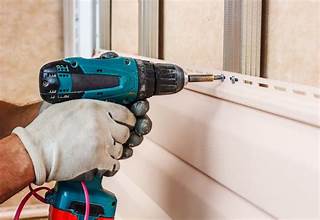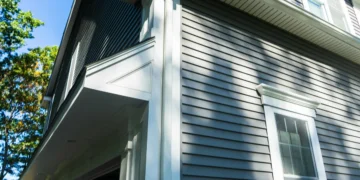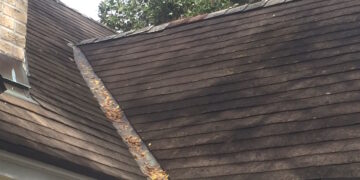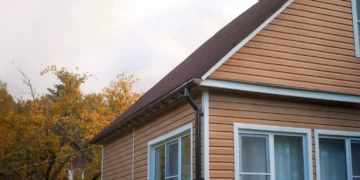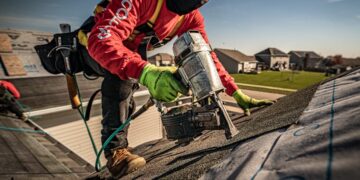Embarking on the journey of loose aluminum siding repair, this guide invites readers into a realm of expertise, ensuring an informative experience that is both engaging and informative.
Exploring the nuances of loose aluminum siding repair, this guide delves into the intricacies of maintaining and securing your siding for long-lasting durability.
Introduction to Loose Aluminum Siding Repair
Loose aluminum siding refers to the panels or sheets of aluminum material that have become detached or are not securely fixed to the exterior of a building. When left unaddressed, loose aluminum siding can lead to a range of issues, including water damage, energy loss, and decreased curb appeal.
Importance of Repairing Loose Aluminum Siding
It is crucial to repair loose aluminum siding promptly to prevent further damage to the structure of the building and maintain its overall integrity. Failure to address loose siding can result in water infiltration, which can lead to mold growth, rotting of the underlying materials, and structural damage.
Common Causes of Loose Aluminum Siding
- Improper Installation: If the aluminum siding was not installed correctly, it may become loose over time due to inadequate fastening or securing.
- Age and Wear: As aluminum siding ages, it can become more prone to loosening due to exposure to the elements and general wear and tear.
- Impact Damage: Physical impact from objects or severe weather conditions can cause aluminum siding to come loose or detach from the building.
- Temperature Fluctuations: Extreme temperature changes can cause aluminum siding to expand and contract, leading to loosening of the panels.
Inspection and Assessment
Inspecting loose aluminum siding for damage is crucial in determining the necessary repair work. This involves visually examining the siding for any signs of dents, scratches, or warping that may have occurred due to weather conditions or other factors.It is important to assess the extent of the repair needed to ensure that all damaged areas are properly addressed.
This includes determining whether a simple reattachment of the loose siding panels will suffice or if more extensive repairs are required to prevent further damage.
Potential Safety Hazards
- Sharp edges: Loose aluminum siding panels can have sharp edges that pose a risk of injury if not handled carefully.
- Falling debris: If the siding is severely damaged and not repaired promptly, there is a risk of debris falling off and potentially causing harm to individuals or property below.
- Elevated work: Repairing loose aluminum siding often involves working at heights, which can present a risk of falls if proper safety precautions are not taken.
Tools and Materials Required
When repairing loose aluminum siding, it is essential to have the right tools and materials to ensure a successful repair. Here is a list of tools and materials needed for the repair process:
Tools Needed:
- Caulk gun
- Hammer
- Drill with screwdriver bit
- Tin snips
- Ladder
- Tape measure
- Gloves
- Safety goggles
Materials Required:
- Aluminum nails or screws
- Aluminum siding panels
- Aluminum flashing
- Paint (if needed for touch-ups)
- Caulk
- Primer
- Sealant
Tips on Sourcing Tools and Materials:
When sourcing tools and materials for your loose aluminum siding repair, it is important to prioritize quality to ensure a long-lasting repair. Consider purchasing from reputable hardware stores or online retailers specializing in siding materials. Additionally, do some research or consult with professionals to ensure you are using the right tools and materials for the job.
Repair Methods
When it comes to repairing loose aluminum siding, there are various methods you can use depending on the severity of the damage. It is essential to reattach the siding properly to prevent future issues and maintain the integrity of your home's exterior.
Reattaching Loose Aluminum Siding
To reattach loose aluminum siding, follow these step-by-step instructions:
- Clean the area: Remove any dirt, debris, or old caulk from the surface where the siding will be reattached.
- Apply adhesive: Use a high-quality adhesive recommended for outdoor use to secure the siding back in place.
- Press and hold: Press the siding firmly against the wall and hold it in place for a few minutes to allow the adhesive to set
.
- Secure with screws: For added stability, you can also use screws to secure the siding in place. Make sure to pre-drill the holes to prevent damage to the siding.
- Seal the edges: Finally, seal the edges of the siding with caulk to prevent water infiltration and ensure a tight fit.
Different Repair Techniques
Depending on the severity of the damage, you may need to consider different repair techniques:
- Minor damage:For minor issues such as loose corners or small dents, simple reattachment methods like adhesive may suffice.
- Moderate damage:If the siding is significantly loose or damaged, you may need to replace the affected panels or sections entirely.
- Severe damage:In cases of severe damage, it is best to consult a professional to assess the extent of the repair needed.
Securing Loose Aluminum Siding
To secure loose aluminum siding and prevent future issues, consider the following tips:
- Regular inspection: Check your siding periodically for any signs of damage or looseness.
- Maintain caulking: Ensure that the edges of the siding are properly sealed with caulk to prevent water infiltration.
- Trim overhanging branches: Trim any overhanging branches near your siding to prevent damage from falling debris.
- Address issues promptly: If you notice any loose siding, address it promptly to prevent further damage and ensure the longevity of your siding.
Maintenance Tips
Regular maintenance is key to prolonging the life of repaired aluminum siding and preventing future issues. Here are some tips to help you keep your siding in top condition:
Regular Inspections
- Inspect your aluminum siding at least once a year to check for any signs of damage or looseness.
- Look for any dents, scratches, or areas where the siding may be pulling away from the wall.
- Check for any signs of rust or corrosion, especially in areas where the paint may have chipped off.
Cleaning and Maintenance
- Regularly clean your aluminum siding with a mild detergent and water to remove dirt, grime, and other pollutants.
- Avoid using harsh chemicals or abrasive cleaners that could damage the paint or finish of the siding.
- Consider applying a fresh coat of paint or sealant every few years to protect the siding from the elements.
Weather Considerations
- Be mindful of extreme weather conditions such as strong winds, hail, or heavy rain, which can damage aluminum siding.
- Inspect your siding after severe weather events to address any potential issues promptly.
- Ensure that your siding is properly installed and secured to withstand changing weather patterns.
Closing Summary
Concluding our discussion on loose aluminum siding repair, it is evident that proper maintenance and timely repairs are crucial in preserving the integrity of your home exterior. Take charge of your siding's well-being and enjoy a sturdy and aesthetically pleasing facade for years to come.
Question & Answer Hub
How do I identify loose aluminum siding?
Look for bulging or warped sections, loose nails, or gaps between the siding and the wall.
What are the common causes of loose aluminum siding?
Factors like extreme weather conditions, improper installation, or aging can lead to loose aluminum siding.
Can I repair loose aluminum siding on my own?
Yes, with the right tools and materials, you can tackle minor repairs. For major issues, it's best to consult a professional.

